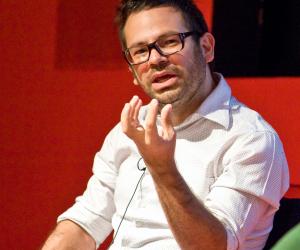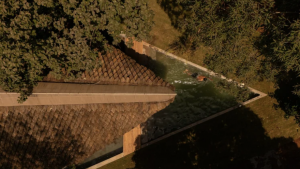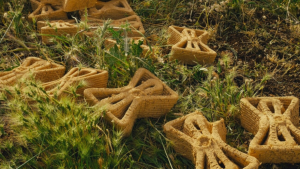Mexico has always been a magnet for international attention throughout different periods, due to its vast cultural offering. A universal body of art history has been generated, partially thanks to the work of our seminal creators. From our pre-Hispanic heritage to all that modernity produced, through to the contemporary scene, Mexico is one of the most prolific cultural sites in the world. It has never stopped, and the world's eyes continue to enquire about our contemporary offerings. Here is a good scope of essential actors (and the ones to come).
Much has been said about the Kurimanzutto Art Gallery that triggered the interest in Mexican contemporary art abroad in the late-1990s and early 2000s. José Kuri and Mónica Manzutto created their own market, and have meticulously helped the careers of the obsessive Jónathan Hernández, DR Lakra and Gabriel Orozco.
LABOR, on the other hand, is young compared with Kurimanzutto's stature, but offers a different level. Pamela Echeverría has driven LABOR since 2009 to become one of the most engaging art dialogue spaces, taking risks and presenting world-class exhibitions. She's also leaping ages ahead from other emerging art spaces in terms of offering a worldwide scope.
Recently, as the commercial market has become pretty stable, there has been a couple of spaces that have aroused the need for critical feedback. Places like SOMA, a project focused on artist education through non-institutional techniques. Also, La Galería del Comercio is an itinerant effort (founded in part with Abraham Cruz Villegas, an artist from Kurimanzutto's roster), dedicated to shows and projects in the public space. They make a statement through its name, as they function as a show platform but without the commercial input of a proper gallery space.
Architecture has also been experiencing a fruitful time, especially with public projects such as Tatiana Bilbao's Botanical Garden in Sinaloa and Mauricio Rocha's Mariano Matamoros Theater in Morelia, Michoacán. Bilbao has been working on this project for years now, collecting and collaborating with some of the world's best-known international artists, commissioning public art to cohabit the space she is designing. This initiative is supported by the Coppel Foundation, one of the two largest contemporary art collections in Mexico.
At the same time, Rocha has constructed an underground theatre formed out of cubes. Instead of designing into space, Rocha decided to take things inwards. This project has not been featured in magazines yet, due to the fact that Rocha is reticent of showing renders and models.
However this year, 2011, has seen particular focus on one phenomenal case: The Soumaya Museum in Mexico City. Having been profiled in leading architectural magazines, the mere possibility haunted architect Fernando Romero to make this building come true and to automatically give it an iconic character. This "art beehive", as fellow architect Pedro Reyes calls it, is the only example of experimental architecture achieved in our context, allowing us to establish a nexus with this international current and making the building – besides being a landmark – an extremely important reference in our architectural annals.
Mexican design history is also a vibrant sequence of personages, events and pieces that have never forgotten where they come from. We have always (almost to the point of cliché) been recognised abroad for our ability and creativity with craft. These days there are a few designers who understand thoroughly that craft is an essential part of Mexico's creative culture and who have tried to rearrange or avoid the confrontation that modernism aroused between craft (tradition) and development. Maybe it was just a logical progression to keep on digging inside tradition and finally to transform its methods to create better technical, aesthetic and, even, social results.
Sonia Lartigue has a very subtle way of transforming tradition into a contemporary result. Very simple and elegant, her Candela luminaries are facetted brass, mirror and glass modular polygons that can behave quite freely in space. They are produced in Familia Piña's workshop, one of the most respected crafts families devoted to traditional lighting in Mexico.
Working hand-in-hand with local artisans, Kythzia Barrera is another such craft-orientated designer. Barrera is the dynamo behind Colectivo de Cerámca 1050°, a commercial branch of a larger project, a civil association called Innovando la tradición. Barrera and a dozen other artists and designers are struggling to challenge the public perceptions and trying to elevate the cultural, symbolic and commercial status of ceramics in a global context. Based in Oaxaca City, this is definitely one of the most integral proposals active in Mexico's design panorama. They teach, present workshops and mount exhibitions, allowing the flow of knowledge and information through design. One of the strengths of their social initiative resides not only in the collaborative creation of objects, but also in following-up properly by creating institutional organisations to support their efforts.
In the fashion realm, Carla Fernandez is one of the most established and active creatives. Her work is rooted in a deep investigation of traditional garments, which is then redirected towards more contemporary solutions. Conventional huipiles (Mayan textiles worn as tunics or blouses) are twisted with the use of new colouring techniques and patterns, while lush cotton rebozos (a multi-purpose rectangular garment) are embroidered with Fernandez's patterns. This gives the pieces a very edgy and urban feel. She recently opened her new store in Polanco, one of the most exclusive districts of Mexico City, right next to the very special design gallery ADN.
The owners of ADN, Paulo Peña and Paulina Hassey, devote themselves to historical design (mostly Mexican) presenting a polished and soulful collection of objects. They struggle a bit due to the lack of public affection towards the recycled but try to educate their clients on the adherent values of historical design. They are also venturing into the edition market, which is going to deliver a second edition collection for 2012.
Spaces like this help us to establish a memoir of who we are. Similarly amazing spaces include the MUJAM (Mexican Toy Museum), a mind-blowing warehouse hidden in a middle-class neighbourhood of the city. Owned by the Shimizu Family, the museum houses the largest collection of toys in the world, giving us a very interesting review of our social and cultural history through popular toys. Another is the MODO Museum, inaugurated only last year. It proposes a nostalgic revision of communication and packaging, helping us picture the past and dialogue with the present.
This need to create and preserve our own memory, feeding our future at the same time, will soon be completed by a private design collection that will be housed by MADU (Museum of Architecture, Design and Urbanism). This study collection specialises in different design disciplines that encouarge the public to get in touch with the experiences and possibilities that design states through objects.















